The ship is not the same, passengers are beyond the plan, heroes were shot
90 years ago, one of the most triumphant events in the entire history of the USSR took place. It caused sincere bewilderment in the famous writer Bernard Shaw: “What kind of country are you?!” The polar tragedy was turned into a national celebration!” This is exactly how the English classic reacted to what happened in the Arctic, where, after the death of the steamer Chelyuskin, they managed to do the almost impossible — to save the members of its crew and passengers who were caught on the ice floe.
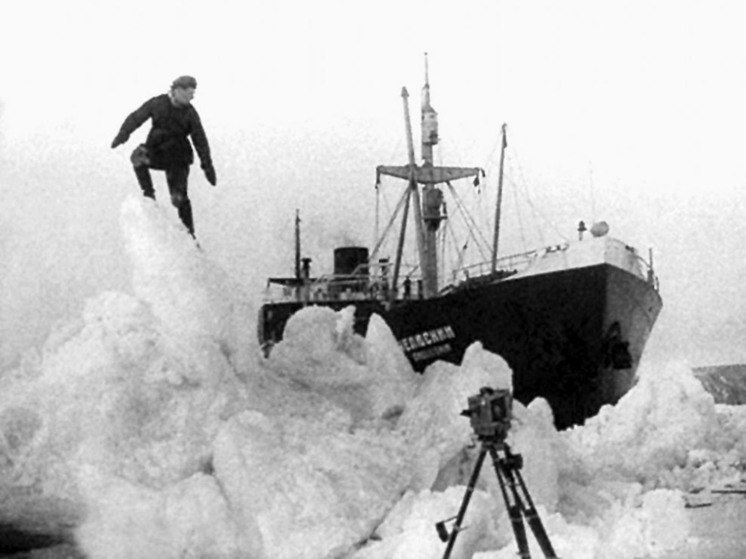
A lot has been written about the months-long epic that caused an unprecedented rise in patriotic feelings in the USSR, but here we will try to look at those events 90 years ago not from the ceremonial fanfare side. After all, in the history of the Chelyuskinites and the unprecedented operation to rescue them, there were moments that, if you look at it more closely, may raise questions.
Answers to some of them to the MK correspondent I managed to get it in my time when communicating with two wonderful people who were thoroughly involved in the “Chelyuskin” topic. One — specialist in the history of the study and development of high latitudes, honorary polar explorer Yuri Burlakov. Another — director Yuri Salnikov, who shot the documentary film “The Chelyuskin Epic” and until his last days (Yuri Petrovich died in January of this year) he was interested in the legendary ice events of 1933–1934.
“Let's start with the ship itself, after which this Arctic battle, which became a bright page in the history of the USSR, was named. His original name was “Lena”. The steamship with a displacement of 7,500 tons was built in Denmark by Soviet order, — Yuri Burlakov told. — According to the project, it was planned to create a special ice-class vessel that could make regular trips between the mouth of the Lena and Vladivostok. But as construction progressed, a number of changes and simplifications had to be made. The result was actually not an icebreaker, but an ordinary steamship. Nevertheless, it was he who was chosen to complete the most difficult task: crossing the Northern Sea Route in one navigation. The recently launched ship was even renamed to better suit its purpose. The old «Lena» became «Chelyuskin» — in honor of the Russian polar explorer Semyon Chelyuskin.
The ship, built by the Scandinavians, had a good engine and modern navigation equipment. Accustomed to the Spartan simplicity of most other Soviet “merchants” sailors admired the interiors of the cabins — oak panels, mahogany upholstered furniture with leather upholstery… The head of the expedition, Otto Yulievich Schmidt, fully shared the praise addressed to the “foreigner.” But Vladimir Voronin, who was appointed captain, had a different opinion.
«Chelyuskin» — The ship is unsuitable for this voyage. The ship will be unlucky! — The most experienced polar navigator directly stated after inspecting the ship. Vladimir Ivanovich was also embarrassed by the fact that due to organizational and technical problems that arose (for example, in order to eliminate some identified problems, he had to make a stop in Copenhagen on the way from Leningrad to Murmansk), departure for such a difficult flight was delayed, and “Chelyuskin” Obviously, it would not have been possible to pass the most difficult sections of the route at the optimal time. Given these circumstances, Voronin even wanted to refuse the appointment to the position of captain, but Schmidt persuaded him to stay. On August 10, 1933, the ship set sail from Murmansk to the Far East.
And how many of them were there, Chelyuskinites?
Answering this question, Yuri Salnikov smiled: “It turns out to be interesting arithmetic.” According to official documents, there were 112 people on board when leaving for the long-distance voyage: 53 crew members, 29 scientists, 18 winterers (they were planned to land on Wrangel Island) and 12 construction workers — carpenters, stove makers, — which were to be built for the “Wrangelites” new houses at the wintering site.
But two days after they left the port, an “addition” happened on the ship. A man was found hiding in a coal bunker — Mikhail Subbotin. It turned out that the young man really wanted to take part in a unique sea voyage and decided to travel along the Northern Sea Route as an illegal immigrant. Subbotin was lucky: in Murmansk he managed to get onto the ship unnoticed. However, the guy still failed to join the ranks of the Chelyuskinites: Captain Voronin said that he did not need an excess passenger. When, upon leaving the Kara Sea, «Chelyuskin» met with the timber carrier «Arkos», a hare was transported onto it.
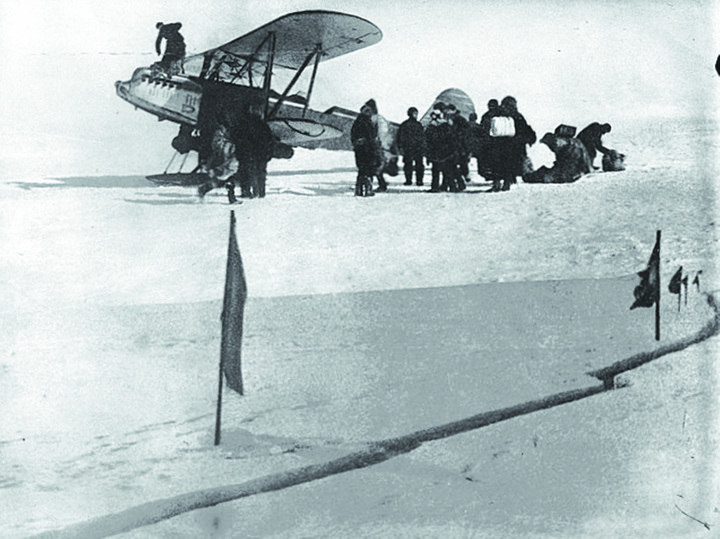 Photo: goskatalog.ru
Photo: goskatalog.ru
An increase in personnel, unusual for ship life, occurred on August 31. The wife of one of the polar explorers, surveyor Vasily Vasilyev, who was going to spend the winter with him on Wrangel Island, gave birth to a daughter. Since the ship was in the Kara Sea at that time, the baby was named Karina.
The following adjustments to the lists had to be made on October 5th. A little earlier, “Chelyuskin”, which had already reached the Chukchi Sea, found itself trapped in ice. From the nearby shore, several local residents reached the ship on dog sleds. Taking advantage of this opportunity, eight raid participants were sent to the mainland — including those whose health condition raised concerns.
By the time of the death of «Chelyuskin» there were 105 people on it. During a shipwreck, one of them died — expedition manager Boris Mogilevich. Thus, there were 104 people in the ice camp. Among them are two children: the already mentioned Karina Vasilyeva and another baby — daughter of the head of the winter camp on Wrangel Island P. Buyko, as well as 10 women — team members (4 cleaners), wives of winter workers, research assistants.
Yu. Burlakov: “A truly conspiracy story is connected with the only victim among the Chelyuskinites. Back in August 1933, when the ship entered the area of large ice fields, the first “date” took place. with polar bears. Mogilevich shot one of them. But this hunting feat of his caused disapproval among experienced polar explorers. Many of them believed that such disrespect shown to the “masters of the Arctic” was fraught with trouble: “Swede Malmgren from the crew of the airship “Italy” killed a bear, and then died himself!” In response, the newcomers, among them Mogilevich himself, only laughed at the superstitions. However, as it turned out, it was in vain. It was the expedition supply manager, a lover of hunting, who was unable to escape from the sinking ship during the evacuation. The remaining crew members and passengers safely survived the entire ice epic. favorably. He, although not without problems, moved forward, — explained Yuri Burlakov. — But when it seemed that the most difficult trials were over, luck turned away from the Chelyuskinites.
On October 31, the ship reached the Bering Strait, a day later it passed Cape Dezhnev. There were only a few miles left to clear water, but a rising storm wind carried the ice floes, among which the Chelyuskin was making its way, back into the Chukchi Sea.
At this critical moment, a radiogram arrived from the icebreaker Litke, located in Providence Bay, with an offer to provide assistance. Schmidt refused, wanting to “preserve the purity of the experiment.” At that moment he was sure that the ship would still be able to escape from the icy “jaws” on its own. On the eve of the next red date of the calendar, Otto Yulievich even sent a radiogram to Moscow: we dedicate the successful completion of the unprecedented flight of “Chelyuskin” to Moscow. along the Northern Sea Route on the 16th anniversary of the Great October Revolution.
Alas, optimistic hopes were not justified. Refusal to help «Litka» turned out to be a fatal decision. The steamer, bound by ice, was carried further and further into the Arctic. The drift lasted 4 months and ended tragically.”
The 13th became truly significant for the history of this legendary ship.
On February 13, according to a radio message transmitted to the mainland, “at 15:30, 155 miles from Cape Severny and 144 miles from Cape Uelen “Chelyuskin” sank, crushed by the compression of the ice.
And on April 13, pilots Nikolai Kamanin and Vasily Molokov took the last Chelyuskinites out of the ice camp. One plane took the boatswain Zagorsky and 8 dogs (they were delivered earlier to the ice floe as a means of transport), and the other — captain Voronin and head of the ice airfield Pogosov.
Exactly two months passed from the moment of the shipwreck until the rescue operation was completed. These 60 days were a time of intense work for hundreds of people — aviators, sailors, weather station workers, radio operators, residents of several villages located closest to the site of the tragedy…
The fate of hundreds of “involuntarily winterers” who found themselves on an ice floe worried literally the entire country. These people became national heroes. Soviet citizens closely followed the progress of the rescue operation, eagerly awaiting new reports about what was happening in the far North. In the center of Leningrad, in front of the Kazan Cathedral, a model of the Chelyuskin camp was even built from snow and ice.
The head of the expedition, O.Yu. Schmidt, was especially popular. For example, some young mothers and fathers began to give their newborn children sonorous names in honor of him — Oyushminald (Otto Yulievich Schmidt on the ice floe), Lashmivara (that is, Schmidt’s Camp in the Arctic)…
Well, the Chelyuskinites themselves, having set up an impromptu town on a drifting ice floe, showed the whole world a unique example of survival in extreme conditions. These efforts and people's dedication ultimately yielded results: of the 104 people who disembarked from a sinking ship in the middle of the Arctic desert, no one died, everyone was saved.
Of course, the question arises: how was such an essentially impromptu success possible? ? After all, a two-month stay of such a large group of people on the ice floe was not included in the expedition plans.
Here is the time to clarify some material and everyday issues related to the organization of the Chelyuskin ice camp.
Y. Salnikov: “The expedition leaders considered it quite probable that the ship could be crushed by ice at the second stage of the Chelyuskin raid.” After all, before this, the ship had already received quite serious damage to the hull. As a result of impacts on hummocks and the pressure of drifting ice fields, several steel plating sheets were deformed, frames were broken… In some places a leak formed, which was actively combated. The situation became much worse when the ship was completely covered in ice.
By order of Schmidt and Voronin, the Chelyuskinites prepared and conveniently placed emergency supplies on the upper deck for their quick transfer to the ice — food, fuel, equipment, radio station, medicines, warm clothes… Therefore, when moment X arrived, everyone acted according to a pre-prepared plan. There was also enough time for evacuation. After all, the agony of “Chelyuskin” lasted more than two hours. They even managed to lower a small plane that the expedition had at its disposal onto the ice floe.”
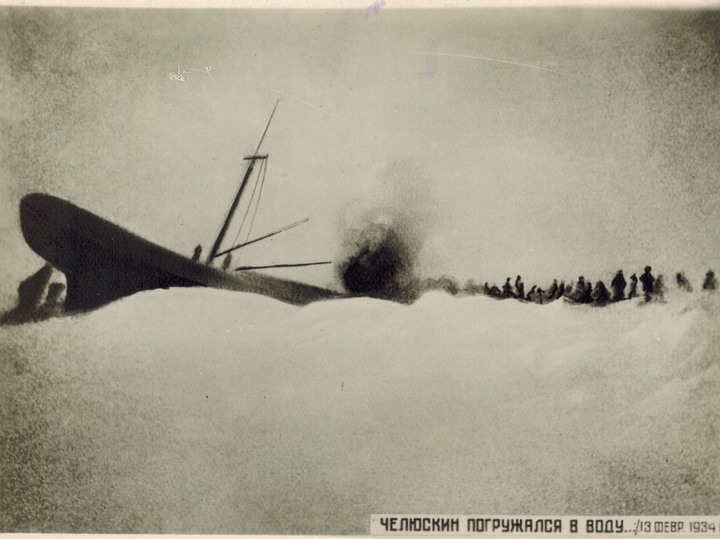 «Chelyuskin» goes under water.
«Chelyuskin» goes under water.
And yet, how could such resources be enough for the existence of an improvised drifting station with such a large population for 60 days?
Yu. Burlakov: “The cargo that was carried on the Chelyuskin turned out to be a huge help.” for winterers on Wrangel Island. Among other things, there was a three-year supply of food, barrels of petroleum products… Much of this was able to be taken from the sinking ship during the evacuation. In addition, logs, boards, and fragments of several prefabricated panel houses (they were also intended for Wrangel Island) were lashed on the upper deck. When the hummocks rammed the side and the ship began to sink, the sailors cut the ropes, and the freed building materials floated up along with the fragments of the ship's superstructures and boats in the ice hole that formed at the site of the ship's sinking… All this wood was pulled out, and then the “Wrangel’s” The building materials were very useful: they were used to build a log barracks, a kitchen, and a signal tower on the ice floe.
Here are some touches to the life of the inhabitants of the ice camp.
From the memoirs of the deputy head of the expedition, Ivan Kopusov: “People were getting into the tents.” according to “professional” sign. There was a tent for scientists, tents for stokers, machinists, sailors…
Mechanic M. Filippov mentioned, talking about the first days on the ice floe, about a unique safety element: “Above each person sleeping (in the tent) there is a large sea knife. This is so that in case… It’s urgent not to crowd around the small exit hole, but to cut the tarpaulin and calmly get out…»
And now — about the evacuation of the Chelyuskinites. Soon after the death of the ship, they began to build an airfield for the planes that were supposed to arrive. An ice floe of suitable size could only be found a few kilometers from the camp. Since then, one of the main activities of these “Arctic Robinsons” has been began clearing and leveling the runway. Due to ice movements, the finished runway was repeatedly deteriorated: hummocks and cracks appeared on it. In total, the Chelyuskinites had to repair or even move it more than 10 times.
Six pilots managed to get from the mainland to the ice camp. Several more of their less fortunate comrades were unable to come to the aid of the Chelyuskinites due to accidents, equipment malfunctions, and vagaries of the weather.
The planes that landed (glacied?) near the target were different in design, and most importantly, in the number of seats. The biggest (and very first) “air guest” was became the twin-engine ANT-4 of Anatoly Lyapidevsky. On March 5, 12 people were taken out of the camp on it — all women and children. But the small “reconnaissance” biplanes The R-5s, which eventually evacuated the bulk of the Chelyuskinites, were only two-seaters. So, even if he left his navigator at the base, the pilot could only pick up a single passenger from the ice camp? Of course, this was very ineffective. That’s why they tried their best in the struggle for greater “human capacity.” airplane. As a rule, it was possible to squeeze two or three into the navigator's seat. Nikolai Kamanin tried to seat another passenger, a smaller one, in his own cockpit, at his feet. Alas, the Chelyuskin man dressed in a fur coat still interfered with the control of the plane, so I had to abandon this idea.
On some flights, a couple of “air travelers” additionally they were transported inside so-called parachute boxes — pencil-case-like cargo containers suspended under the wings on both sides. Not every inhabitant of the ice camp was ready for such a method of transportation. Firstly, an overweight person simply did not fit in the “pencil case”, and secondly… This is how the pilot of one of the P-5s, Vasily Molokov, described the loading process: “They planted him there head first, folded the man’s arms and, like a Whitehead mine, pushed him into a narrow box.” Without actually being able to even move, “suspended” the passenger had to spend the entire flight in the air, in the cold.
After the successful completion of a unique operation in the Arctic, government awards rained down on the Chelyuskinites and the participants in the rescue operation. The seven pilots sent to search for the Schmidt camp and take people out of there were awarded the honorary title “Hero of the Soviet Union,” newly introduced in the USSR. Several of their fellow aviators, as well as the organizers of the evacuation, received orders. And the inhabitants of the “ice town” — members of the expedition on «Chelyuskin» (everyone except children) was awarded the Order of the Red Star…
Among them was the pilot Mikhail Babushkin. His small plane Sh-2, which was being transported by ship, was saved during the crash. Mikhail Sergeevich managed to repair the damaged car with the help of improvised means, take off and, together with the mechanic, get to this “dragonfly” to the airfield in the village of Vankarem. Thus, it turns out that Babushkin also evacuated one person from the ice camp. However, he was not given the heroic title in 1934.
Old newsreels showing the ceremonial meeting of Chelyuskinites and pilots in Moscow are very popular. A line of open cars with Arctic heroes is moving along Gorky Street, the sidewalks are crowded with enthusiastic citizens, and over all this it’s like a blizzard has broken out — Myriads of white paper sheets are spinning. Interested to know what kind of leaflets these are, what is written in them?
I heard the answer during a meeting one day with Tamara Polyakova, who worked for many years as the personal secretary of Hero No. 6 — pilot Mikhail Vodopyanov: “Mikhail Vasilyevich recalled that at the Belorussky station, where the train with the participants of the Chelyuskin epic arrived, a guard of honor was lined up and greeted the arrivals with a salute of 11 salvos. Gorky Street turned into a “road of flowers” — crowds of Muscovites literally showered the cars in which they were traveling with bouquets. And people prudently seated on balconies and rooftops scattered leaflets over the street. Their text is laconic: “We are proud of your victory!”
Red Square was specially decorated for the gala meeting. Huge portraits of all the Heroes of the Soviet Union were hung on the Kremlin wall. The heroes of the occasion themselves walked to the podium of the Mausoleum, and only after that the leaders of the state, headed by Stalin, went up there (this is perhaps the only case when the “father of nations” ceded to someone the right to be the first to ascend the Mausoleum. -). Then there was a parade, a demonstration…
A lot was written about the Chelyuskinites at that time; separate brochures and books dedicated to them appeared. But much more laurels went to the pilots — the first seven Heroes. With unprecedented efficiency, literally two months later, the album “How We Saved the Chelyuskinites” was published. In preparing it, experienced editors from Pravda carefully “combed” biographies, corrected the facts… At the same time, it was necessary to urgently correct the “ideological omission”: they suddenly realized that some of the honored aviators were not members of the party! Of course, they were immediately accepted into its ranks.
By the way, another government decree appeared at that time: to perpetuate the feat of the first Heroes of the Soviet Union, to erect an obelisk in the capital. However, there was a hitch in the implementation of this order from the Kremlin. In the end, the monument was never built, and on the site that was reserved for it in the mid-1930s, a huge monument to Peter I later appeared.
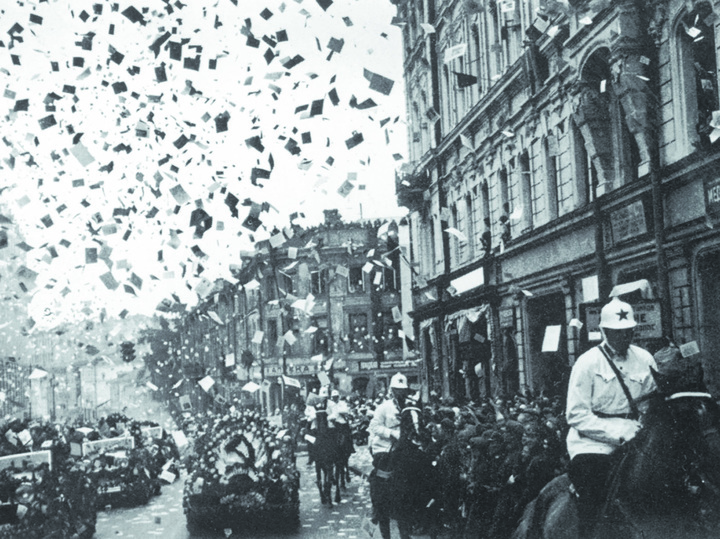 Meeting of Arctic heroes in Moscow. Photo: pastvu.com
Meeting of Arctic heroes in Moscow. Photo: pastvu.com
For some time, the country of the Soviets was literally bewitched by the heroic events in the Arctic. The authorities encouraged such an ideologically correct campaign. Rallies and evenings dedicated to Chelyuskin’s epic were held everywhere. Its participants (especially the pilots) were in great demand: they were invited to speak to the public, elected to the honorary presidiums of the meetings…
However, the polar idols also had “opponents.” — employees of the “authorities”. Apparently, the investigation carried out by the security officers in hot pursuit did not reveal anything in the situation with the death of Chelyuskin. any deliberate sabotage. However, the vigilant comrades from the Lubyanka, as they say, still have an aftertaste. Therefore, when a few years later the time of the “Great Terror” came in the USSR, not all of the recent Chelyuskin heroes managed to protect themselves from repression.
For example, it is known that in January 1938 the Military Collegium sentenced to death “for participation in a counter-revolutionary organization” two former members of the expedition, who by that time had occupied leadership positions in the Main Directorate of the Northern Sea Route. One of them — Ilya Baevsky, who was O.Yu. Schmidt’s deputy on the expedition. Something else will be discussed below.
In Chelyuskin’s epic there was also a very remarkable character, but for many decades he remained in the shadows. We are talking about the head of the Northern Sea Route trading post in the village of Vankarem, Georgiy Krivdun.
Many Chelyuskinites who were taken from the ice floe remembered him with warmth. After all, their difficult journey to the mainland passed through this polar settlement. And Krivdun managed to organize there the most comfortable living conditions for people who had just miraculously been rescued from the icy Arctic embrace. It was Georgy Terentyevich who worked hard to accommodate the evacuees, feed them, protect them from the cold, and help with sending them to the next point in the evacuation chain.
The name Krivdun can be found in the “front door” already mentioned above. book “How we saved the Chelyuskinites”: “…moved to Vankarem. The head of the trading post, communist Comrade Krivdun, the oldest worker in Chukotka, helped us a lot in our further work.” In fact, everything was exactly the opposite. Georgy was the son of a Cossack from a village located near Vladikavkaz. In 1930, during the dispossession and decossackization campaign carried out in the country, a wealthy resident of the Terek village Terenty Krivdun and his family were sent into exile beyond the Urals — to the harsh northern regions. After some time, Terenty’s eldest son became a public figure there — received the position of head of the Vankarem trading post.
Georgy Terentyevich did not receive any significant awards for his participation in the evacuation of the Chelyuskinites from the authorities. But just over two years later, the “oldest worker” «thanked» differently.
By that time, Krivdun had changed his place of work — he was in charge of a trading post at Cape Schmidt. There he was “tied up” in October 1936. security officers arrived. To the arrested “polar Cossack” charged with “participation in a counter-revolutionary organization” and sent to the camp. The further fate of this person is unknown.
Yu. Burlakov: “Alas, the notorious “Gulag” The topic stuck quite tightly. to the story of “Chelyuskin”. In the early 2000s, a sensation suddenly surfaced: they say that another ship was sailing in the wake of the famous steamship — «Pizhma», which carried 2000 prisoners for the Chukchi tin mines. At the suggestion of a certain “historian” it was alleged that soon after the death of the lead ship «Pizhma» also sank, dragging its forced passengers to the bottom… I also heard that supposedly on the “Chelyuskin” itself were transporting a batch of prisoners.
All this is fiction. However, as we found out in our time, among the Chelyuskinites there were several people who were subjected to repression before being sent on the famous Arctic voyage.
Among them are Schmidt’s deputy for political affairs, Alexey Bobrov — in fact, the second person in the expedition. After the evacuation of the sick Otto Yulievich from the ice floe, it was Bobrov who was assigned by Moscow to be the head of the Chelyuskin camp. So, it turns out that Alexei Nikolaevich was arrested in January 1931 and charged under the notorious Article 58. He spent more than 14 months in prison, but was then released and some time later sent to Chelyuskin. However, fate did not smile on him for long. In the fall of 1937, Bobrov, who was then working in the Northern Sea Route Administration, was again arrested “for participation in a terrorist organization,” and on January 3, “Kremlin comrades” signed another “execution list”, in which Bobrov’s name was listed among others.
Meticulous researchers were able to unearth information about another Chelyuskin citizen from the “zekovskaya” prison. biography. Dmitry Berezin, who was listed as a carpenter in the team of builders sailing on the ship, turned out to be… a fugitive counter-revolutionary! Back in the fall of 1932, a peasant from a remote Novgorod village was arrested on charges of sabotage and participation in a counter-revolutionary group. Dmitry Ilyich was sentenced to 10 years in the camps. But he managed to escape while transporting a convoy of prisoners at the railway station. Moreover, Berezin was able, with the help of certain benefactors, to get himself a certificate replacing a passport, and was recruited into the construction crew at Chelyuskin. Together with hundreds of other participants in the famous ice epic, Dmitry Ilyich experienced all the difficulties of such an Arctic adventure, was taken from the ice floe by plane, participated in celebrations dedicated to the Chelyuskinites, received an order from the hands of Kalinin… The security officers later figured him out. However, it was decided not to touch the “folk hero”. Until the war, Berezin worked at one of the Leningrad factories and died during the blockade.










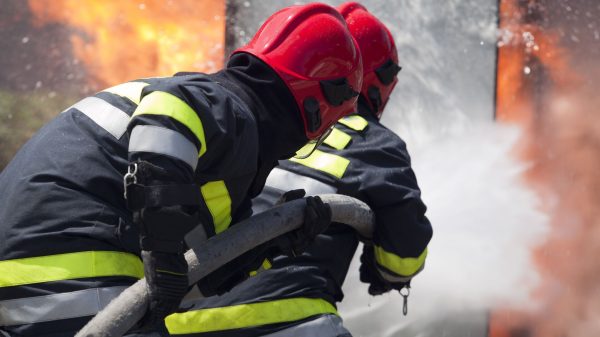










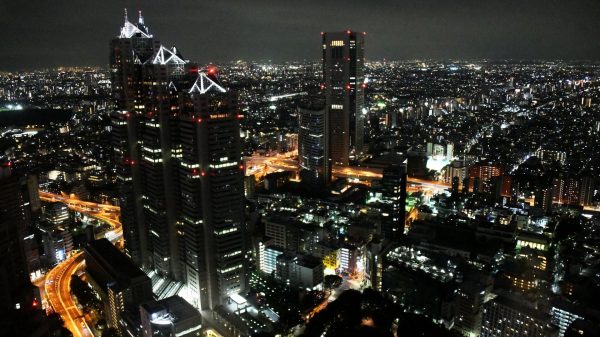
































Свежие комментарии